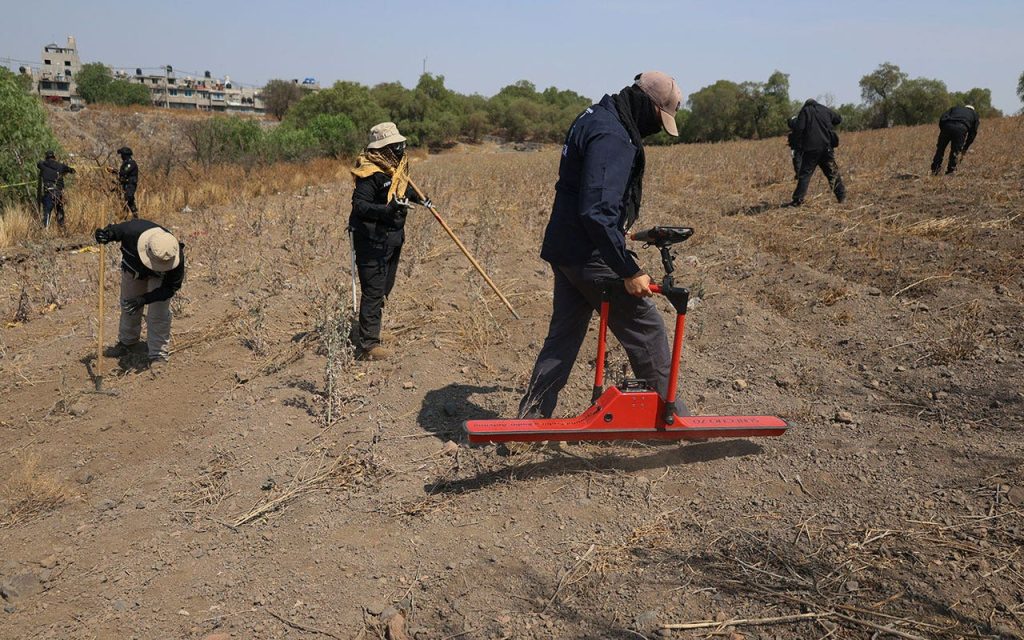Volunteer searchers in Mexico City have claimed to discover a clandestine crematorium on the outskirts of the city, prompting an investigation by authorities to determine if the remains found are human. The Mexican government has provided little funding for the search of missing persons, leaving volunteer groups to take matters into their own hands. This discovery is significant as it is the first time such a body disposal site has been reported in the capital, with drug cartels typically utilizing other methods in other areas of the country. The searchers, mostly comprised of the searching mothers from northern Mexico, found bones, clandestine burial pits, and ID cards in a rural area of the city’s south side.
The discovery of the clandestine crematorium, if confirmed, would be a political embarrassment for the ruling party and the city’s government, as Mexico City has long been considered relatively safe from the drug cartel violence that plagues other parts of the country. The city’s dense population, extensive security camera network, and large police force are believed to deter criminals from acting in the same way they do in more provincial areas. However, parts of the south side still remain undeveloped and unmonitored, allowing for criminals to potentially dispose of bodies in such a manner.
Volunteer searchers, often the mothers of the disappeared, conduct their own investigations due to the lack of government support in finding missing persons. The government’s efforts of simply checking the last known address of the missing to see if they have returned home without notifying authorities has been criticized as a means to reduce politically embarrassing figures on the missing persons list. The searchers aim to find the remains of their loved ones, rather than convicting anyone for their abductions, and have been let down by the government’s lack of funding for official search teams and a genetic database for identification purposes.
Relatives of the missing in Mexico City have resorted to relying on anonymous tips, sometimes from former cartel members, to locate suspected body-dumping sites where cartels hide their victims. The volunteers use steel rods to detect the scent of death in the ground, potentially helping to locate the remains of the missing individuals. The lack of systematic searches and identification procedures by the government has led to a reliance on the efforts of the volunteers in uncovering graves and retrieving remains. Despite the dangers and risks involved in their search efforts, these activists continue to search for Mexico’s more than 100,000 missing people.
The Mexican government’s limited funding and lack of official search teams have left victims’ families to take matters into their own hands in the search for their missing loved ones. While volunteers have discovered clandestine burial sites and remains, the government’s response has been inadequate in terms of identification and support for the families of the missing. The high number of missing persons in Mexico, combined with the challenges faced by volunteers in their search efforts, highlights the ongoing issue of violence and disappearance in the country. The dedicated work of the volunteers, despite the risks they face, sheds light on the need for more comprehensive and effective strategies for locating missing persons and bringing closure to their families.













